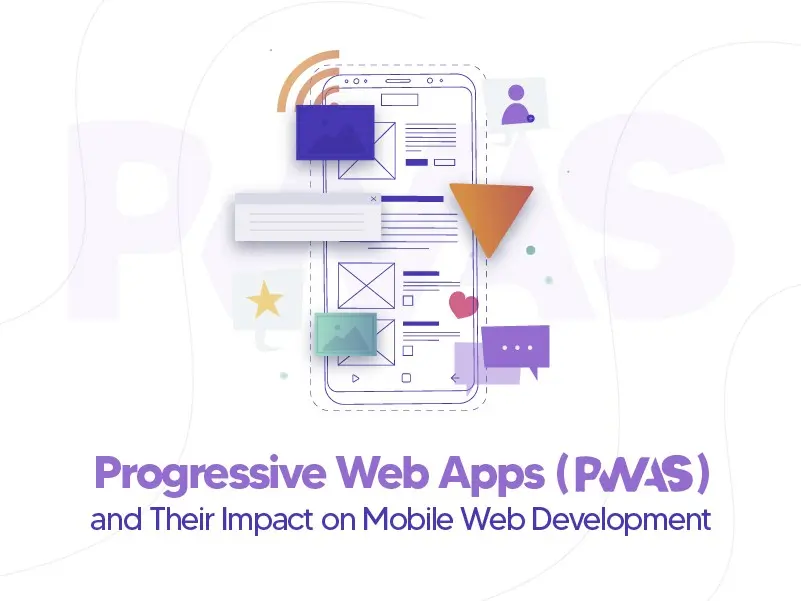In the ever-evolving landscape of mobile web development, staying ahead of the curve is crucial for delivering exceptional user experiences. One of the transformative trends in this space is the rise of Progressive Web Apps (PWAs). PWAs represent a shift in how we approach web development, offering a range of benefits that enhance the user experience and redefine the possibilities of mobile web applications.
Understanding Progressive Web Apps (PWAs):
At its core, a Progressive Web App is a web application that leverages modern web capabilities to deliver an app-like experience to users. In contrast to conventional web apps, PWAs are crafted to operate smoothly on diverse devices, providing functionalities commonly linked with mobile app development. This includes offline functionality, push notifications, and the ability to be added to the home screen.
Key Features and Benefits of PWAs:
Offline Functionality:
An outstanding characteristic of PWAs lies in their capability to operate without an internet connection. This is achieved through the use of service workers, which are scripts that run in the background, intercepting network requests and allowing the app to cache content. This means that users can continue to access certain functionalities even when they are not connected to the internet, providing a more reliable and consistent experience.
Fast Loading Times:
PWAs are engineered for speed. They leverage techniques like lazy loading and efficient caching to ensure that the app loads quickly, even on slower network connections. This is a game-changer for user retention, as faster loading times contribute significantly to a positive user experience.
Responsive Design Across Devices:
PWAs are designed to be responsive, adapting seamlessly to different screen sizes and resolutions. This is a critical aspect of developing mobile apps, as users access websites and applications from a variety of devices, including smartphones, tablets, and desktops. The implementation of a responsive design guarantees a uniform and visually pleasing user experience across different platforms.
Engaging User Experience:
Through elements like push notifications, PWAs have the capacity to captivate users, even during periods of inactivity within the application. This capability is similar to what users expect from native mobile app development and opens up new possibilities for user engagement and retention.
Case Studies: PWAs in Action:
Twitter Lite:
Twitter Lite, a Progressive Web App version of the popular social media platform, offers users a faster and more data-efficient experience. With offline capabilities and push notifications, Twitter Lite provides a seamless experience even in low network conditions.
Pinterest:
Pinterest rebuilt its mobile web experience as a PWA, resulting in a 44% increase in user-generated ad revenue and a 60% boost in engagement. The PWA allowed Pinterest to deliver a reliable and fast experience to users, leading to a significant positive impact on key business metrics.
Challenges and Considerations
While the benefits of PWAs are evident, there are challenges and considerations in their development and implementation. Browser compatibility, for instance, can be a hurdle, as not all browsers fully support PWA features. However, with the increasing adoption of PWA standards, this challenge is gradually diminishing.
Developers also need to consider the learning curve associated with PWA development, as it involves understanding service workers, manifest files, and other concepts that may be new to those accustomed to traditional web development.
Implementing PWAs: Best Practices:
Start with a Mobile-First Approach:
Twitter Lite, a Progressive Web App version of the popular social media platform, offers users a faster and more data-efficient experience. With offline capabilities and push notifications, Twitter Lite provides a seamless experience even in low network conditions.
Optimize for Performance:
Performance is a critical factor in the success of PWAs. Employ techniques like code splitting, lazy loading, and efficient caching to enhance the app's speed and responsiveness.
Utilize Service Workers Wisely:
Service workers play a crucial role in enabling offline functionality. Understanding how to implement and manage service workers effectively is key to maximizing the benefits of PWAs.
Test Across Different Devices and Browsers:
Since PWAs are intended to work across various devices and browsers, thorough testing is essential. Ensure that your Progressive Web App performs well on both popular and emerging browsers and across a range of devices.
Progressive Web Apps represent a paradigm shift in mobile web development, offering a bridge between the capabilities of native mobile app development and the accessibility of web-based solutions. As we continue to witness the evolution of the digital landscape, embracing PWAs provides developers and businesses with a powerful tool to create faster, more reliable, and more engaging mobile web experiences.
By understanding the principles of PWAs and incorporating them into developing mobile apps practices, Creative’s Genie is forging a path toward a future where the distinctions between web and mobile applications are increasingly blurred, propelling user experiences to unprecedented levels.
Creative's Genie specializes in providing mobile app development solutions, delivering cutting-edge solutions tailored to meet the unique needs of clients. With a dedicated team of skilled professionals, Creative's Genie is committed to crafting mobile web applications that are not only visually appealing but also highly functional. Whether it's optimizing existing websites for mobile compatibility or developing entirely new mobile-centric platforms, Creative's Genie ensures a seamless and engaging user experience across various devices.


